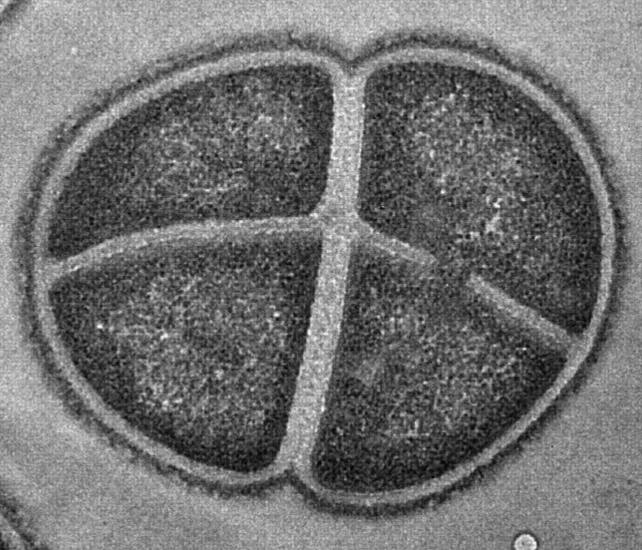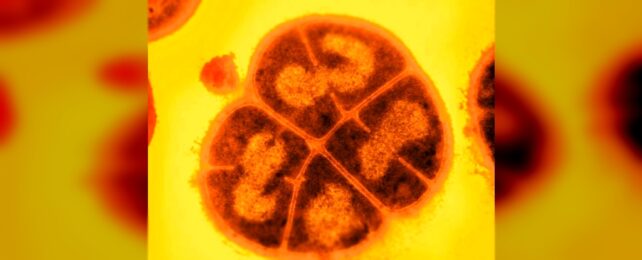Not all superheroes wear capes. Capable of handling extreme cold, acid, and dehydration, the microbe Deinococcus radiodurans handles doses of radiation that would kill a human tens of thousands of times over, earning it the nickname 'Conan the Bacterium' after the valiant pulp fantasy character.
The secret to micro-Conan's strength lies in an assortment of highly potent antioxidants that mop up the mess of oxygen radicals before they can damage proteins critical to the cell's repair process.
To better understand how these substances confer protection, researchers from Northwestern University and Uniformed Services University (USU) in the US undertook a detailed study of the chemistry at work.
Their findings challenge earlier assumptions on how this brute of a bacterium handles blasts of radiation with the unwavering stoicism of its warrior namesake.

Radiation wreaks harm by overloading the bonds in our biological machinery, causing it to fall apart. In anticipation of this, most living things have efficient repair mechanisms that jump into action to undo the damage in the most critical of systems, such as in genetic materials.
Bombarded with enough ionizing energy or simply stressed by processes such as desiccation, cells will rapidly fill with a toxic form of oxygen molecule shed by the chemical carnage and other metabolic processes. If it's not taken care of quickly, these 'superoxide radicals' will make short work of any repair mechanisms and allow the damage to mount.
Like many organisms, D. radiodurans has evolved an insurance policy against such oxygen damage in the form of a mix of antioxidants. Some are based on the element manganese, which when paired up with a variety of other materials – such as phosphate – eases the stress of rampaging oxygen with remarkable efficiency.
Past studies have pinpointed a manganese and phosphate-augmented peptide called MDP as another potential component in this protective shield, which has led to the design of new compounds that preserve the shapes of signature antigen proteins in vaccines that require sterilization by gamma radiation.

While D. radiodurans' MDP clearly works wonders for the microbe and for vaccine developers, the comparative strength of its heroic handiwork is based on a few assumptions.
To test these, Northwestern chemist Brian Hoffman and USU pathologist Michael Daly led a team of scientists in measuring the activity of MDP's components, testing how strongly each bonds in place in the presence of other pieces of the puzzle and how the materials accumulate in the microbe's body to cope with damage.
They demonstrated the triple-combination structure of manganese, phosphate, and peptide far outdoes any pair of the others.
"We've long known that manganese ions and phosphate together make a strong antioxidant, but discovering and understanding the 'magic' potency provided by the addition of the third component is a breakthrough," says Hoffman.
"This study has provided the key to understanding why this combination is such a powerful – and promising – radioprotectant."
In a study published in 2022, Hoffman and Daly found desiccated, frozen samples of D. radiodurans could be revived after soaking up 140,000 grays of radiation. By comparison, it'd take just a small handful of grays to see most humans to the grave.
Future research could find manganese-based materials can be tweaked further to bestow us with Conan's might, or simply used in other applications that preserve foods or medicines to withstand the stresses of a journey to Mars and beyond.
"This new understanding of MDP could lead to the development of even more potent manganese-based antioxidants for applications in health care, industry, defense, and space exploration," says Daly.
This research is published in PNAS.
